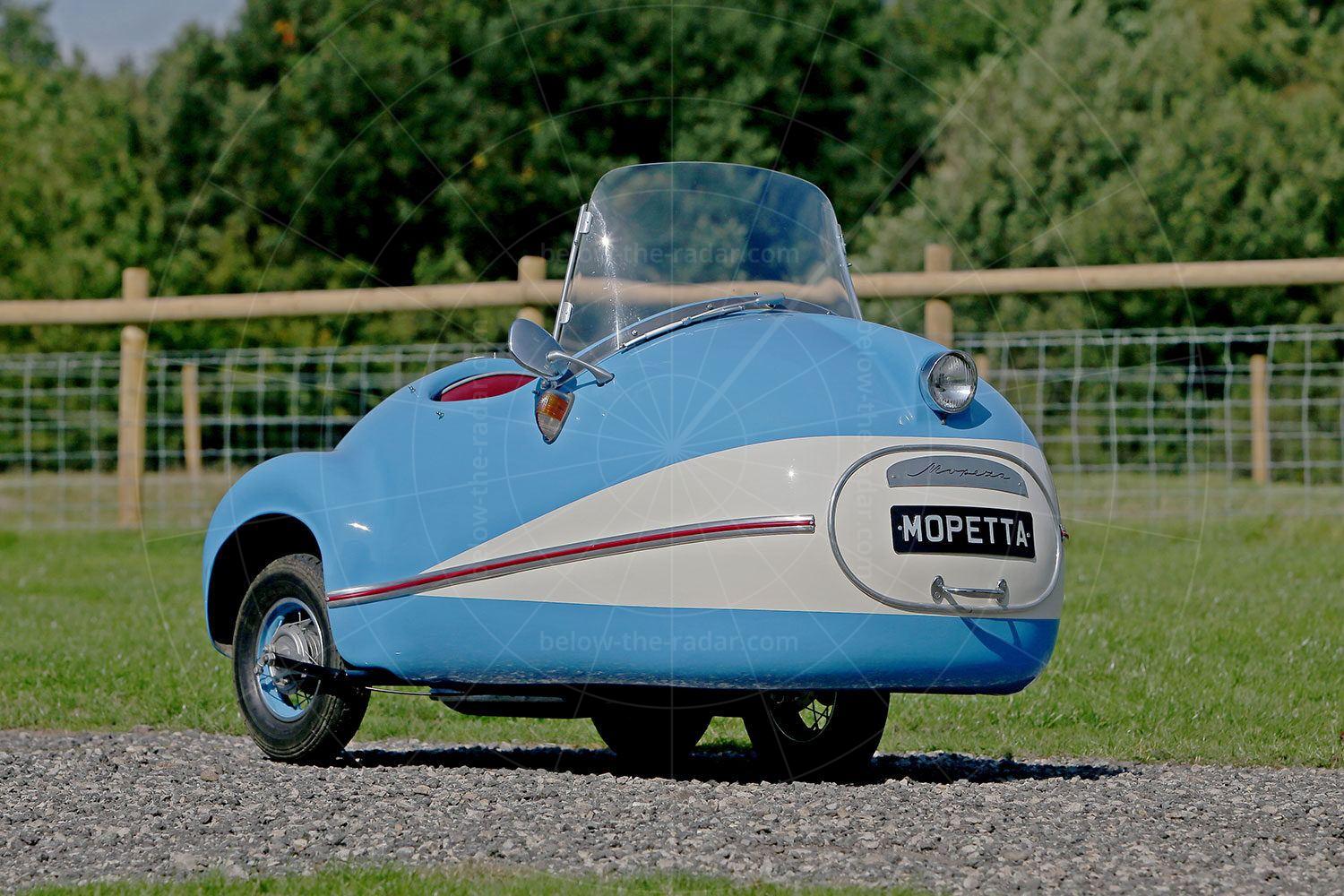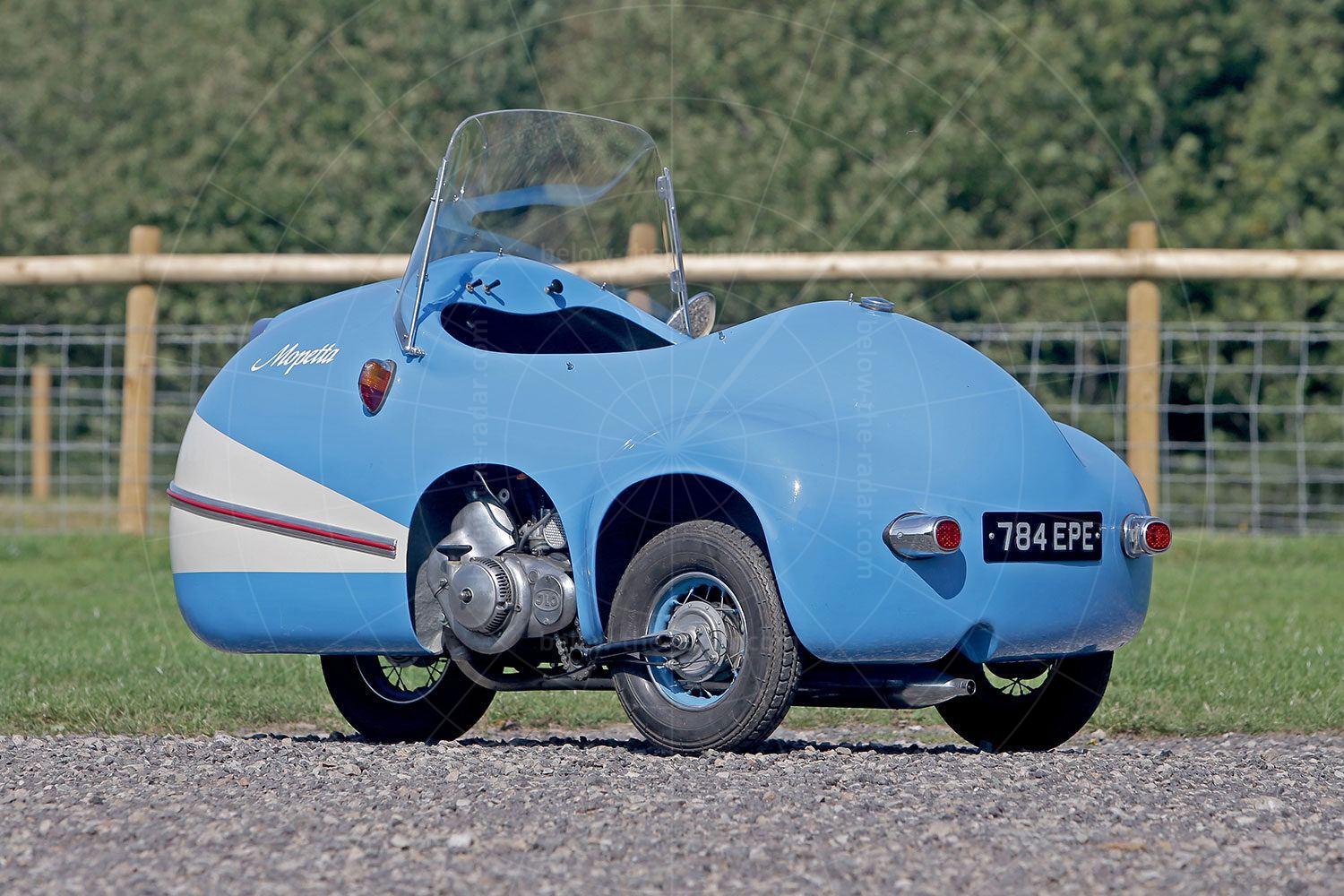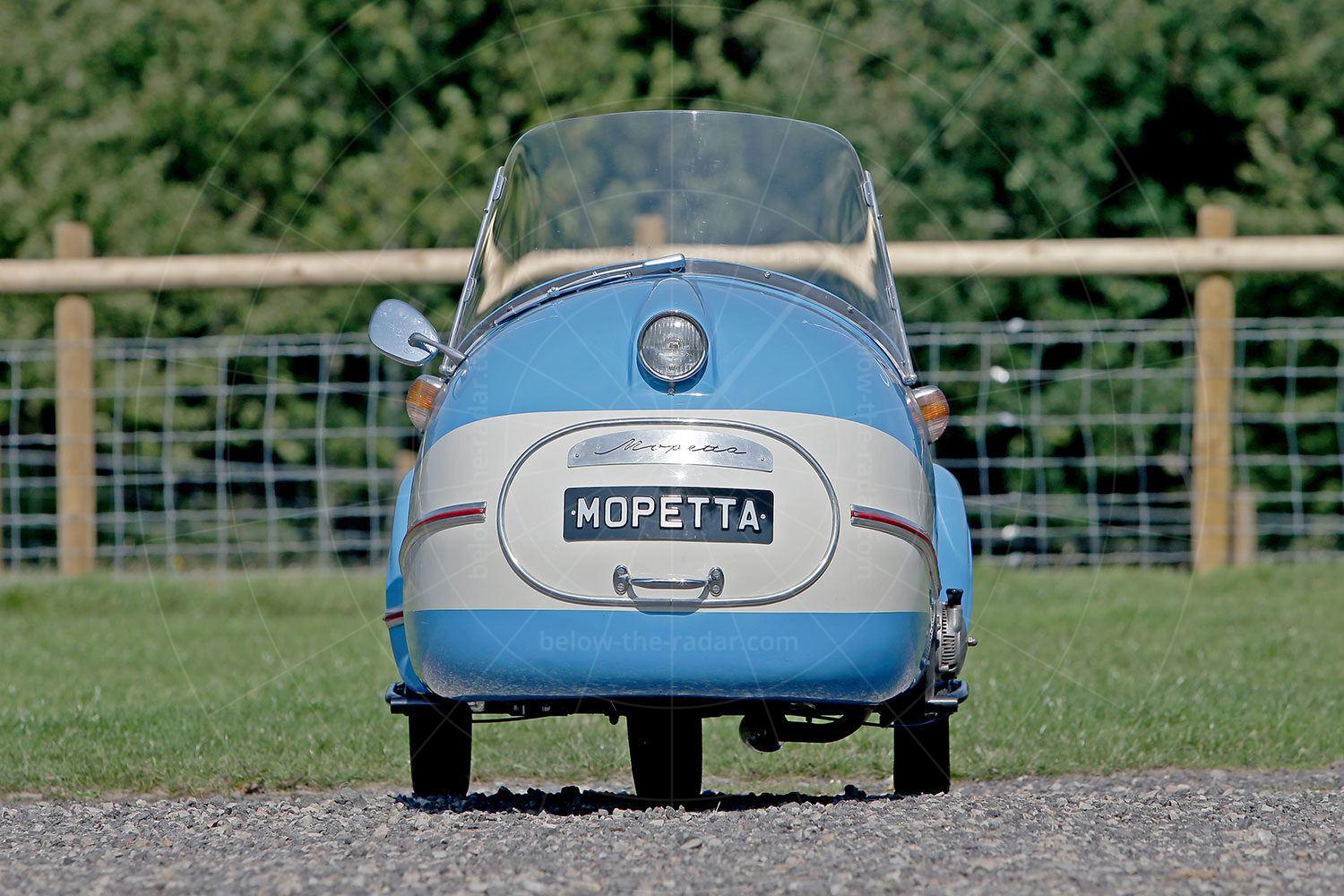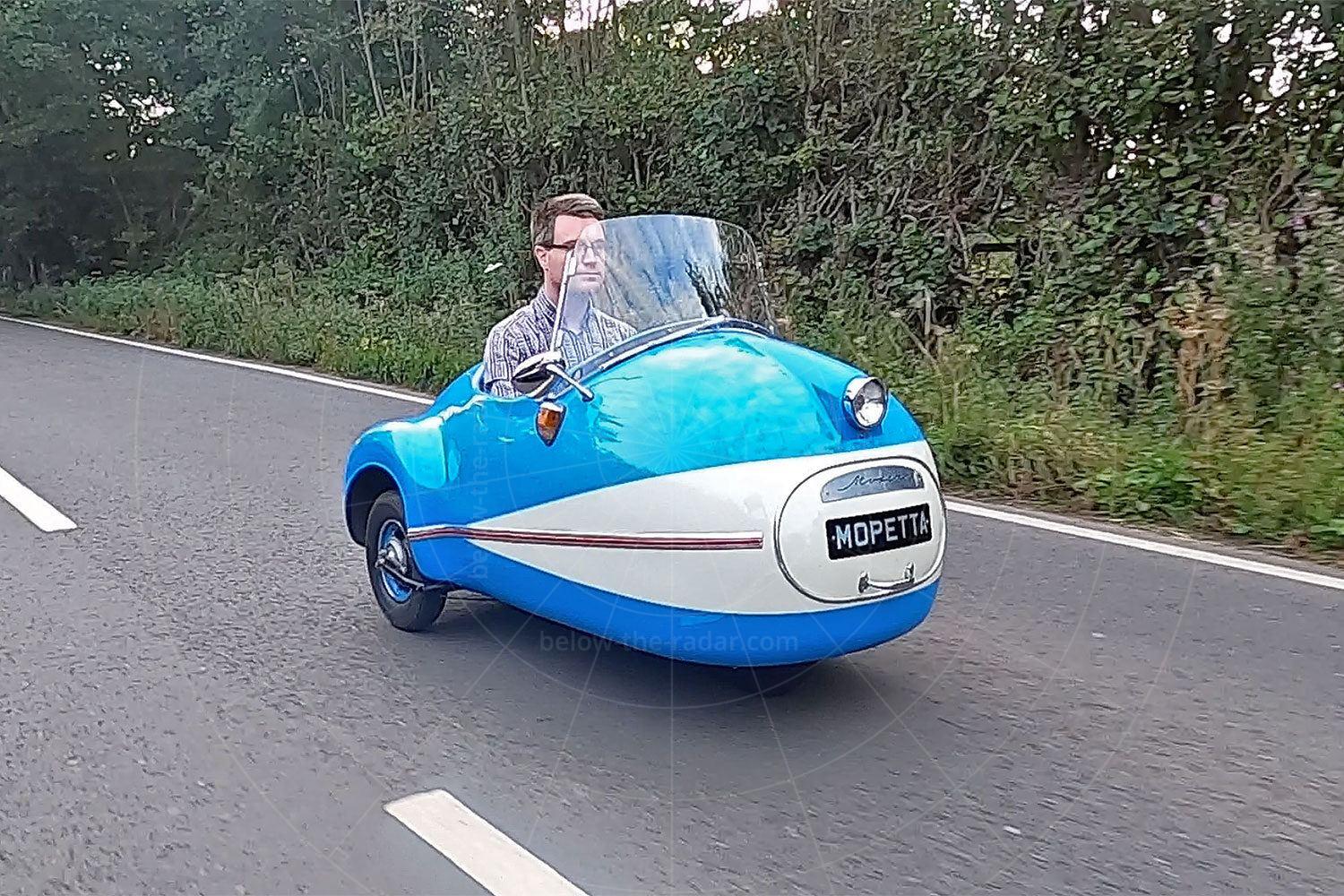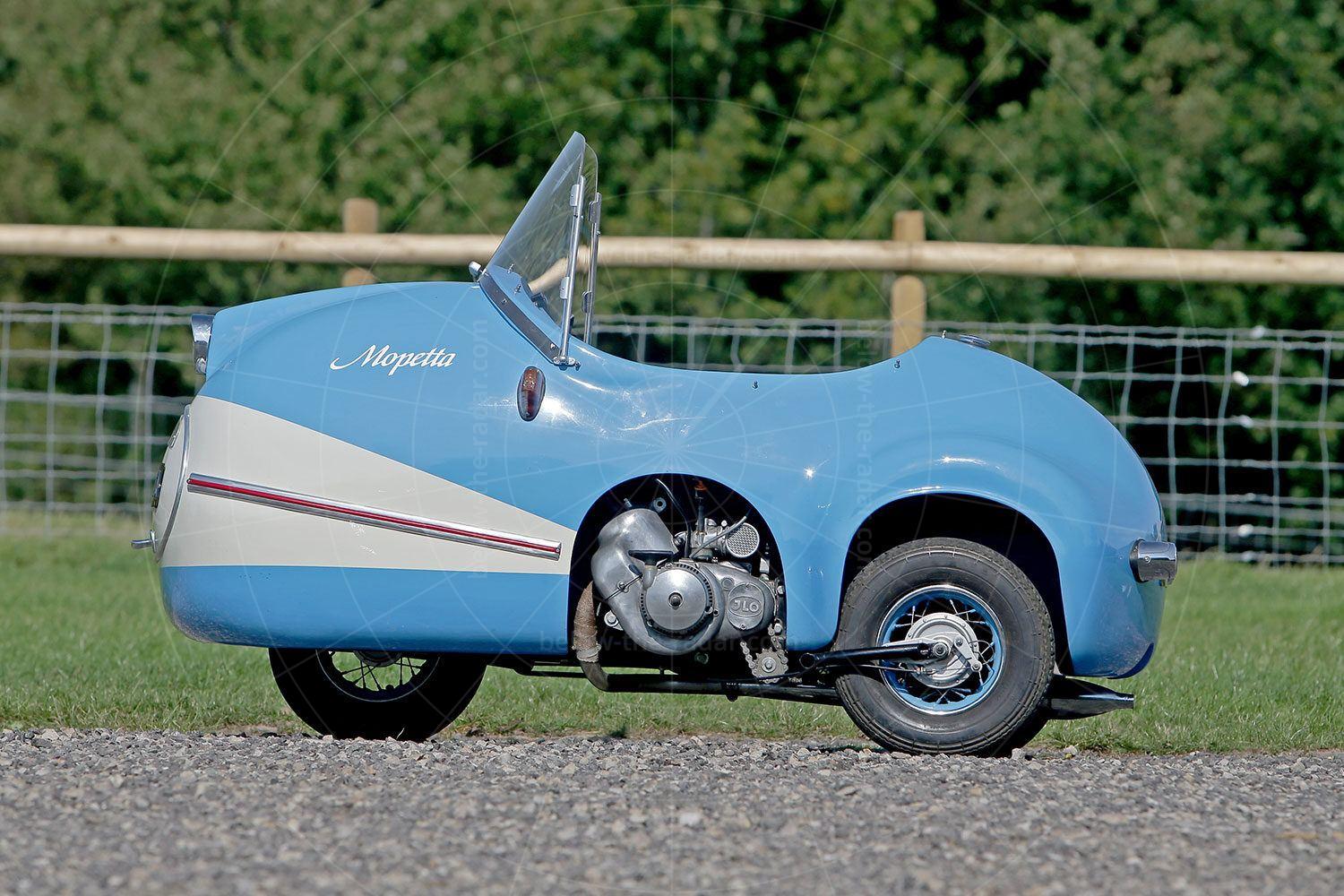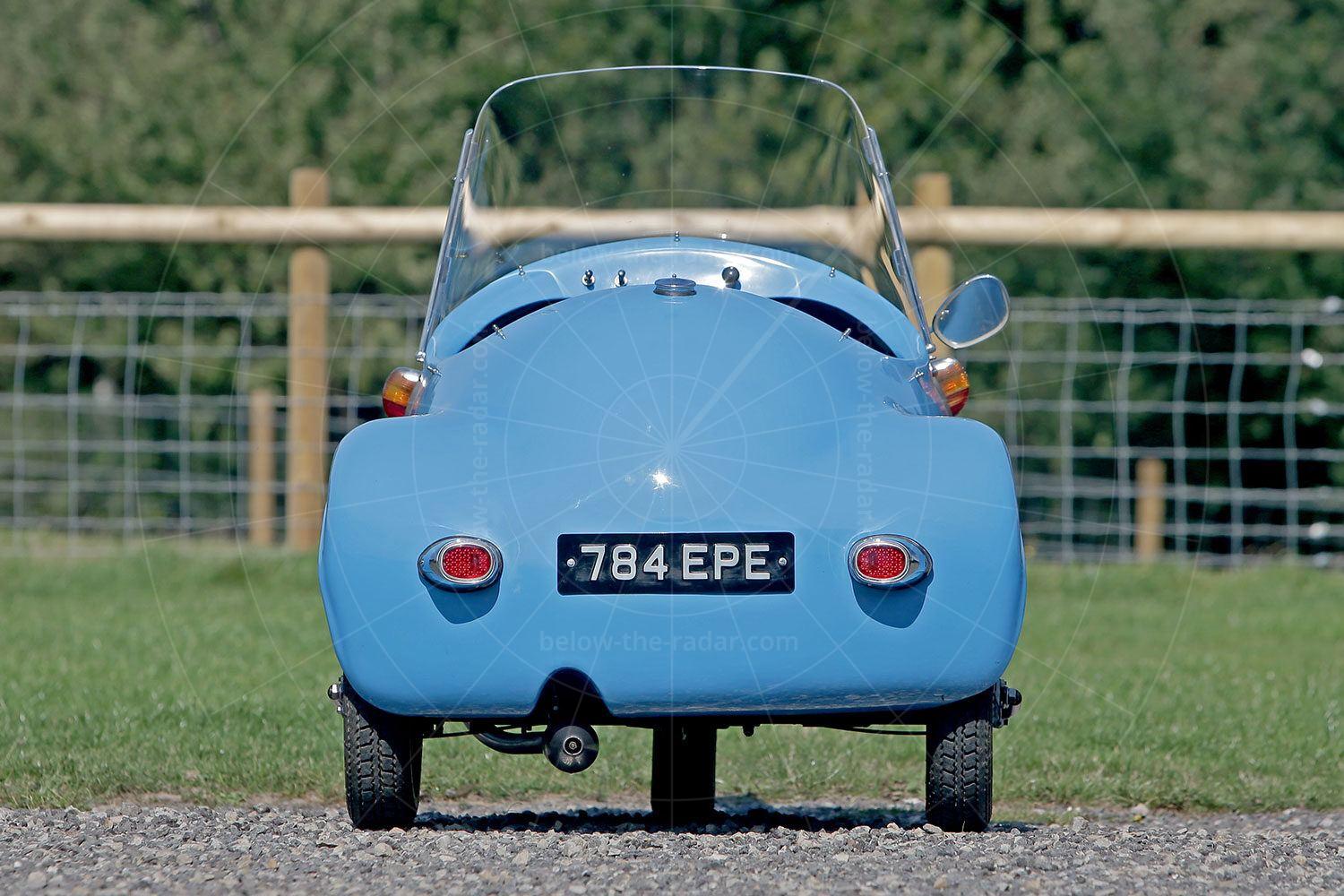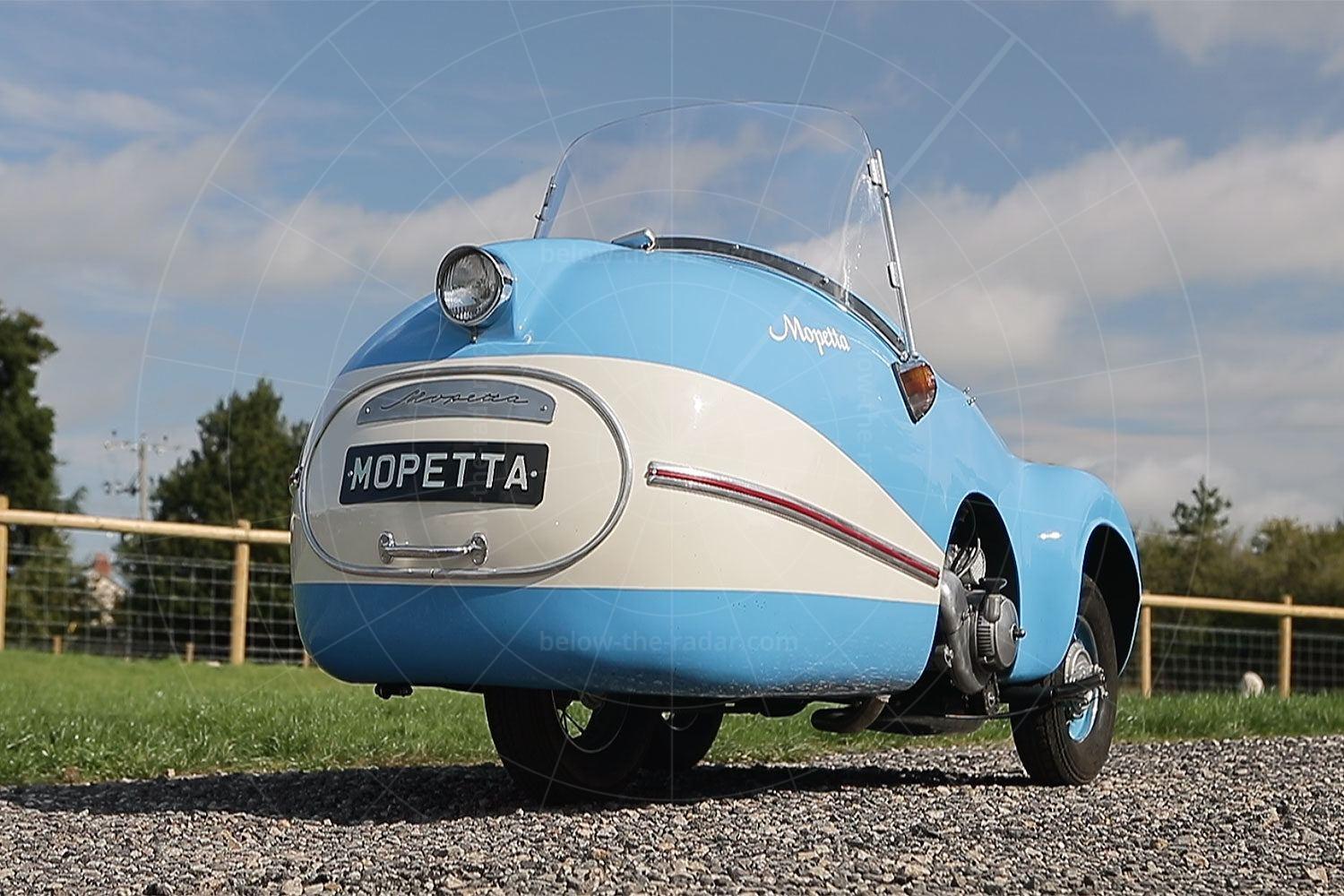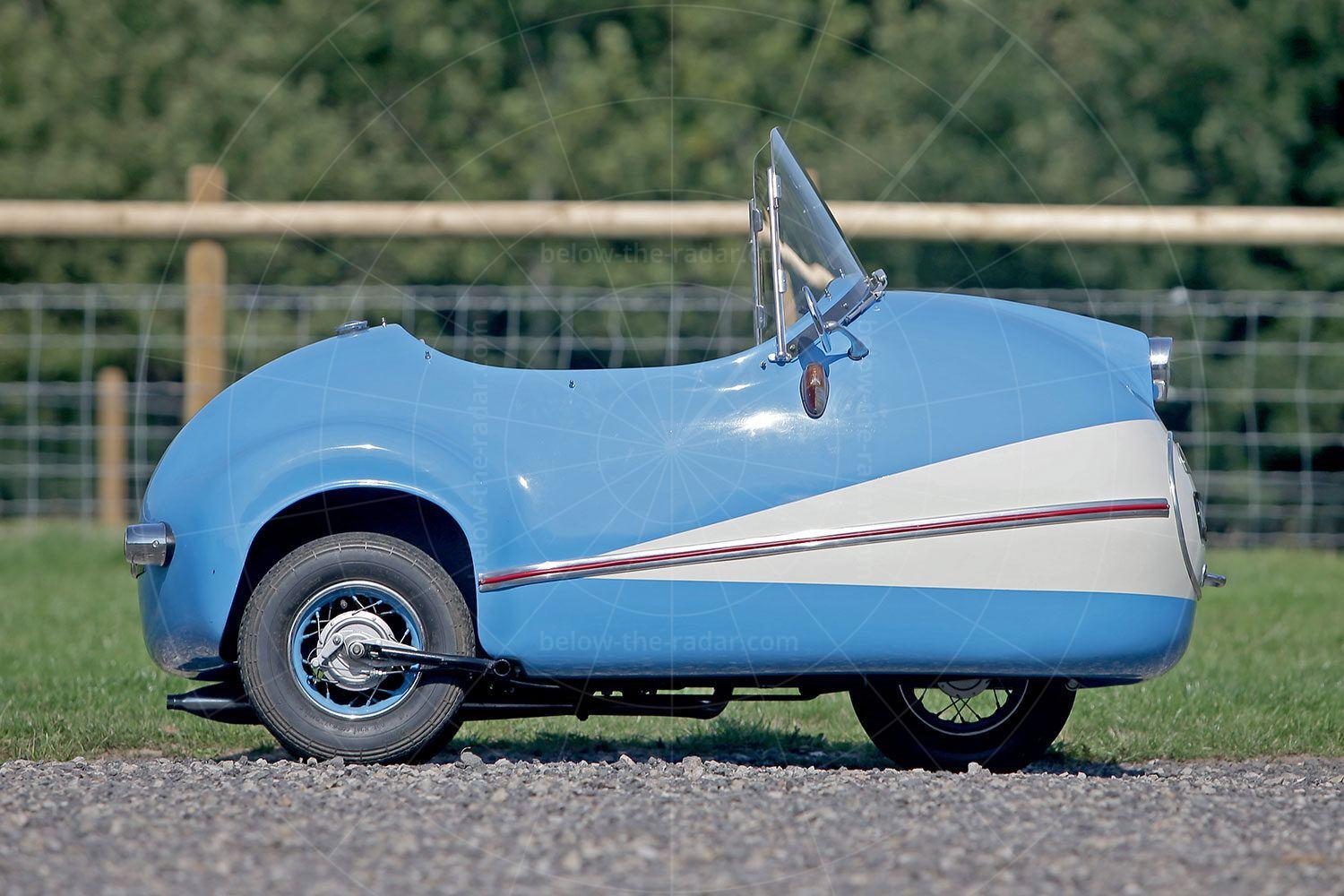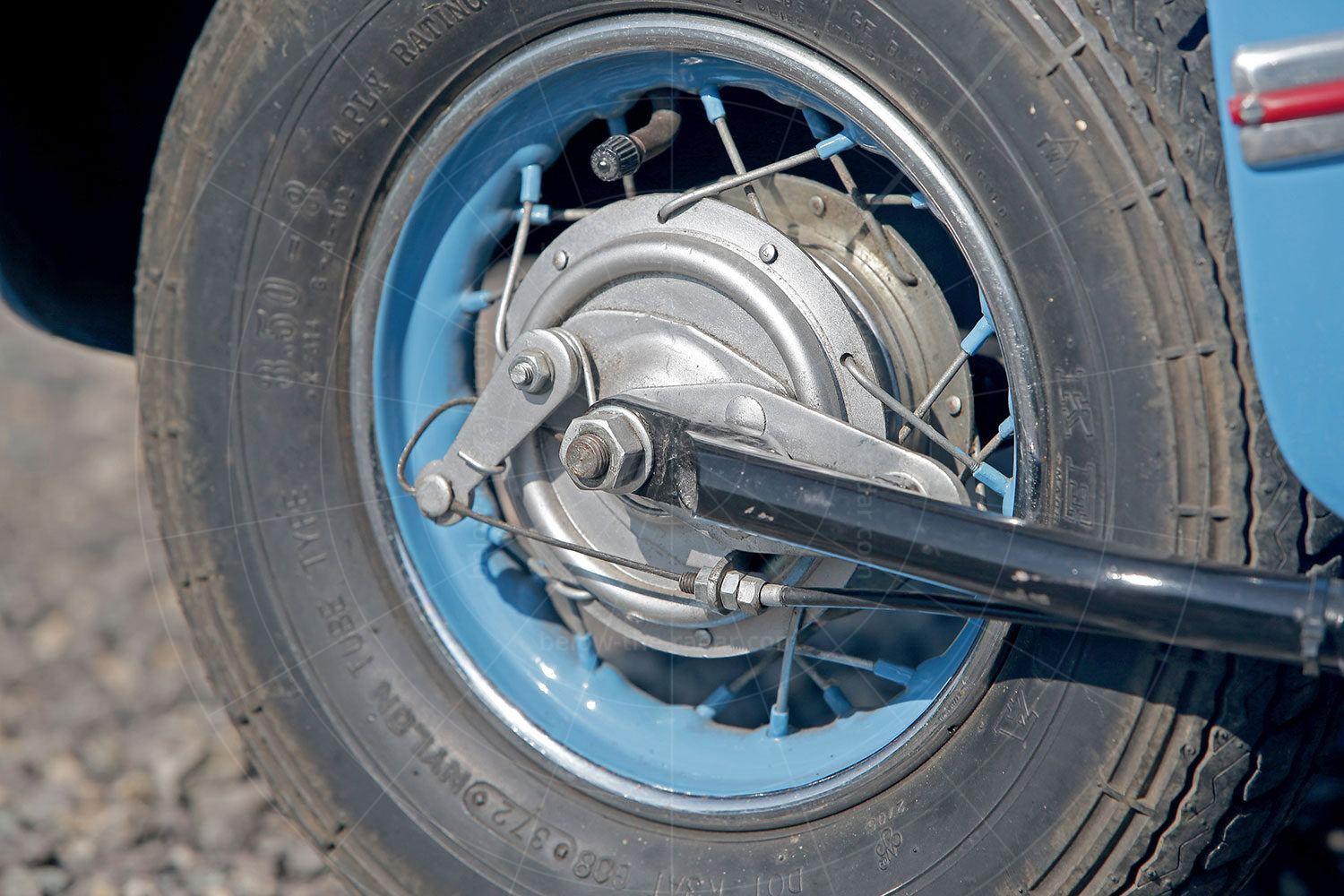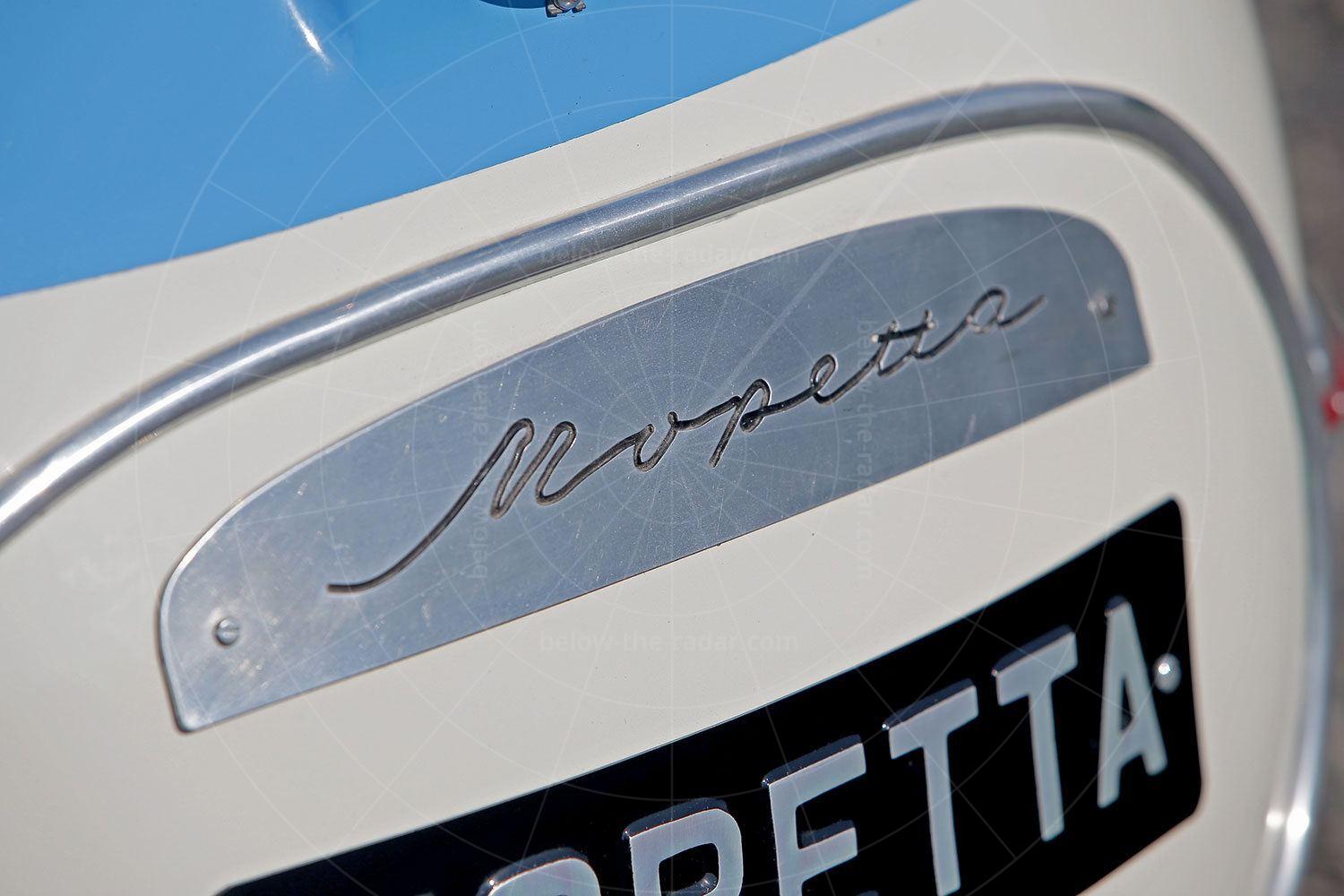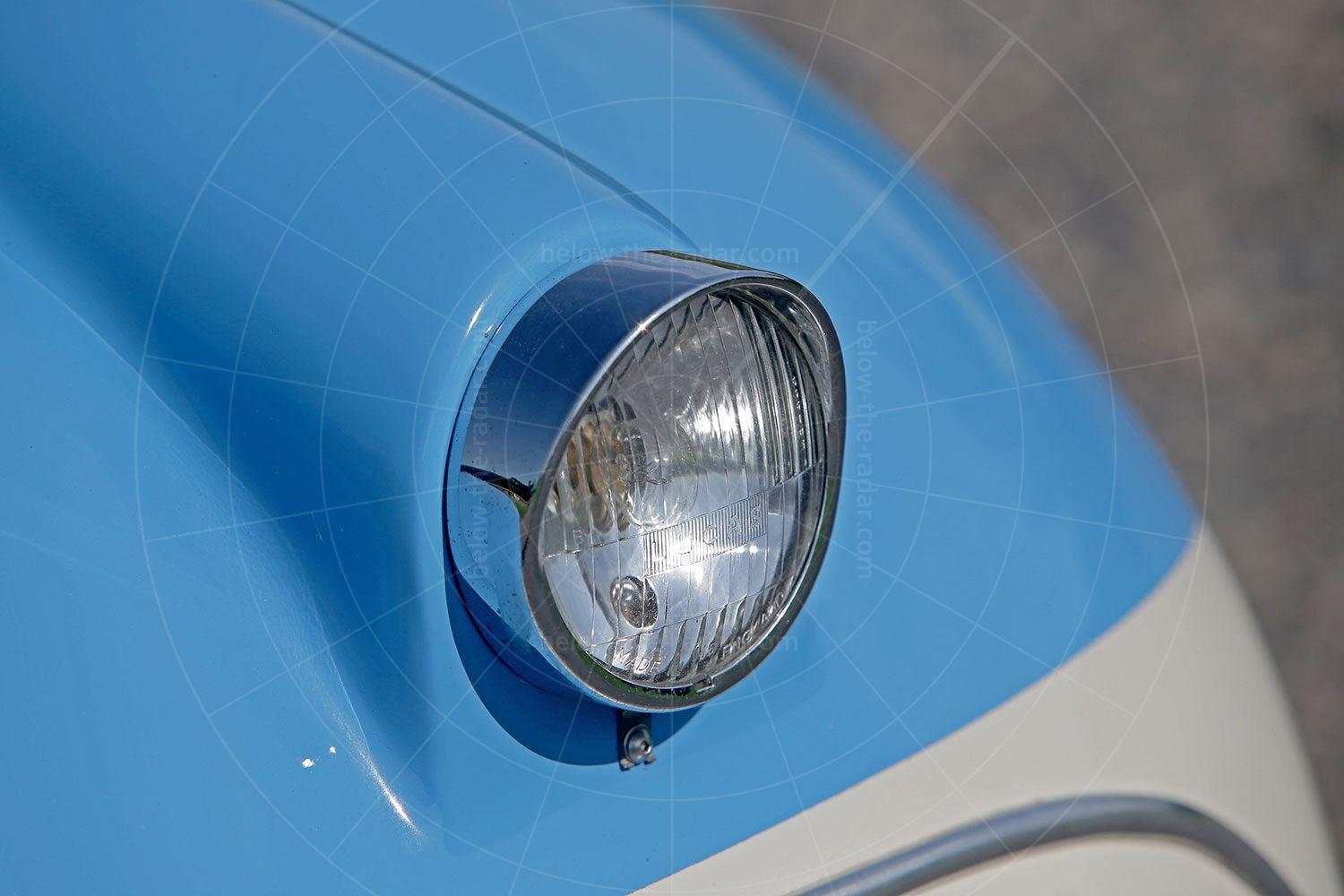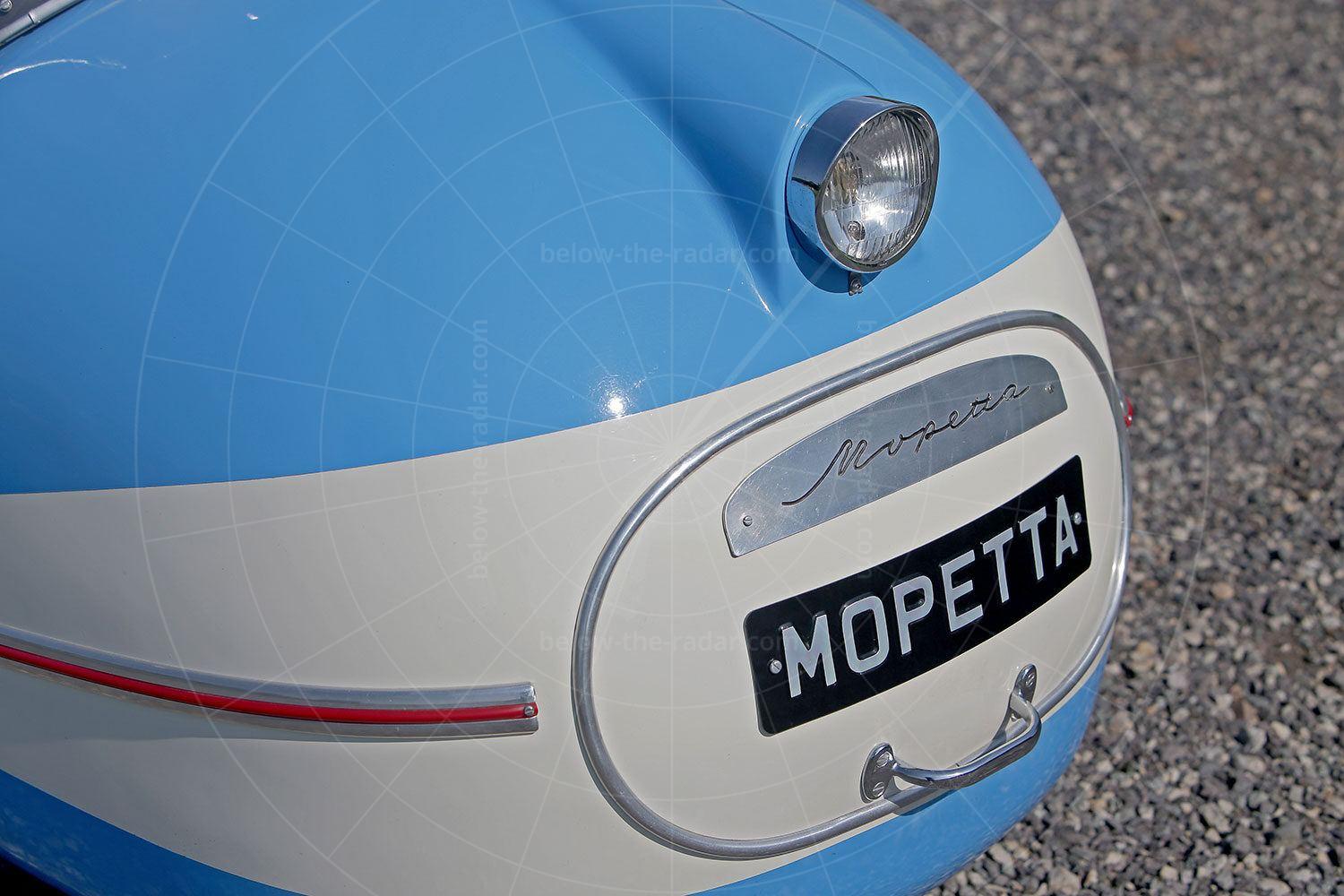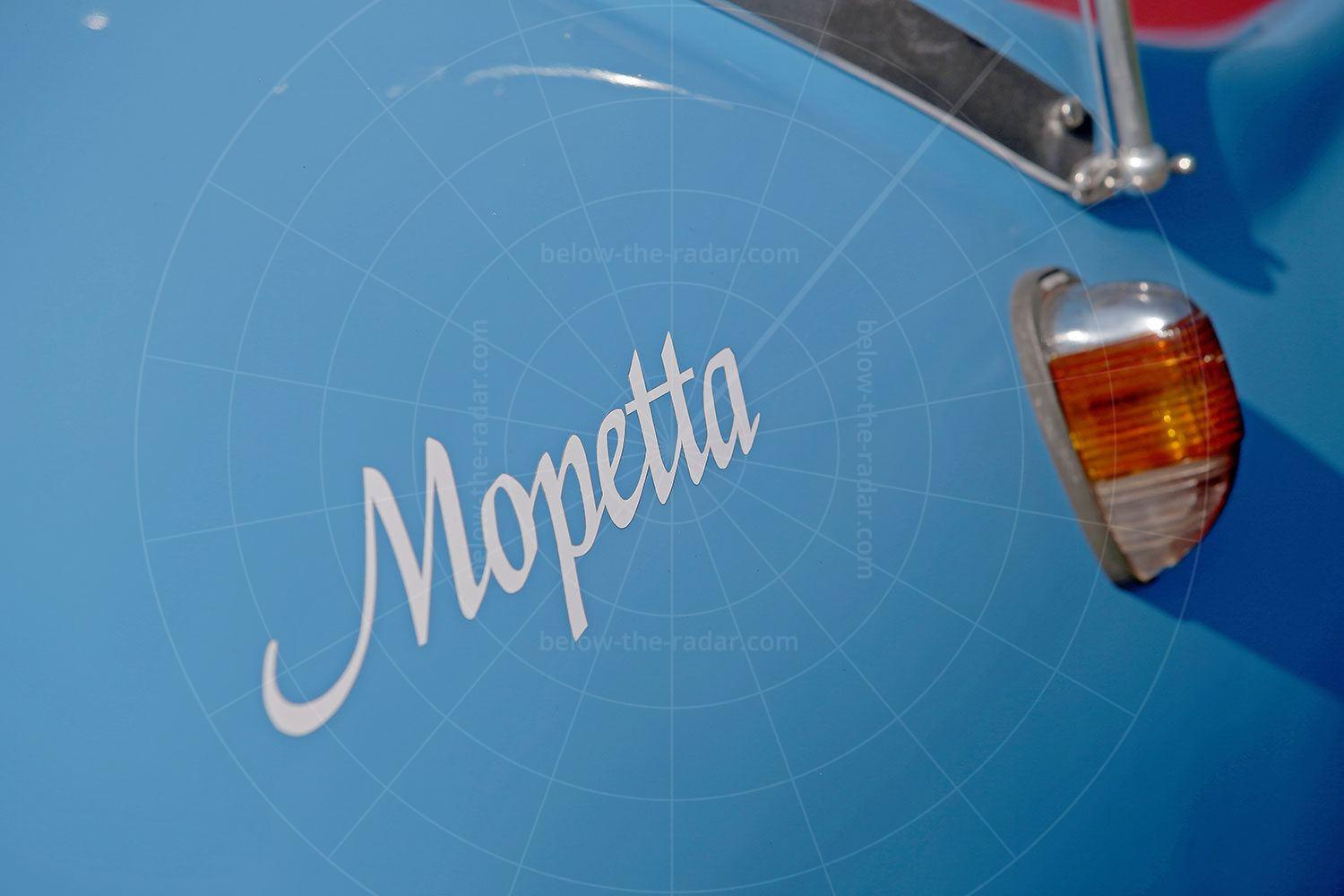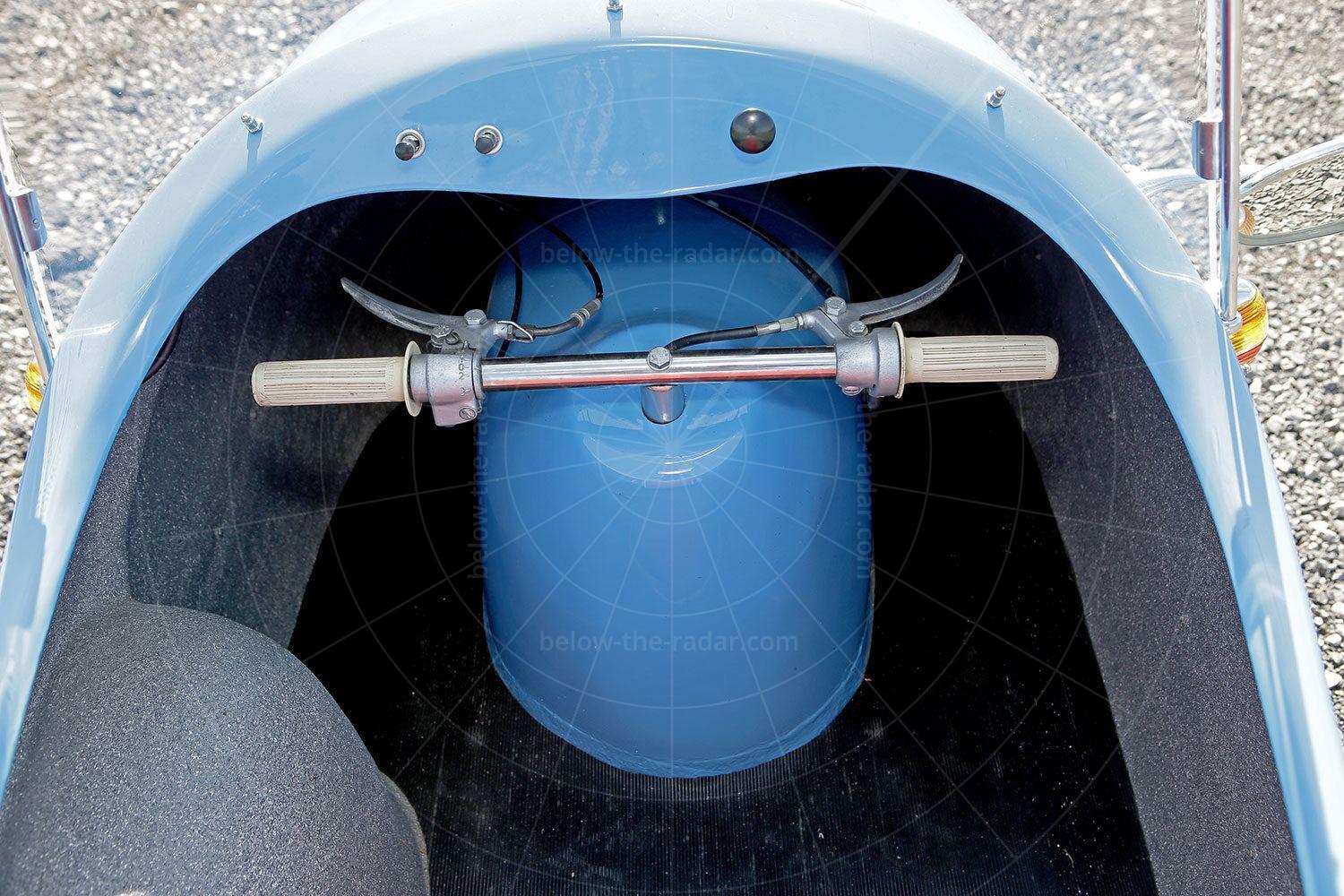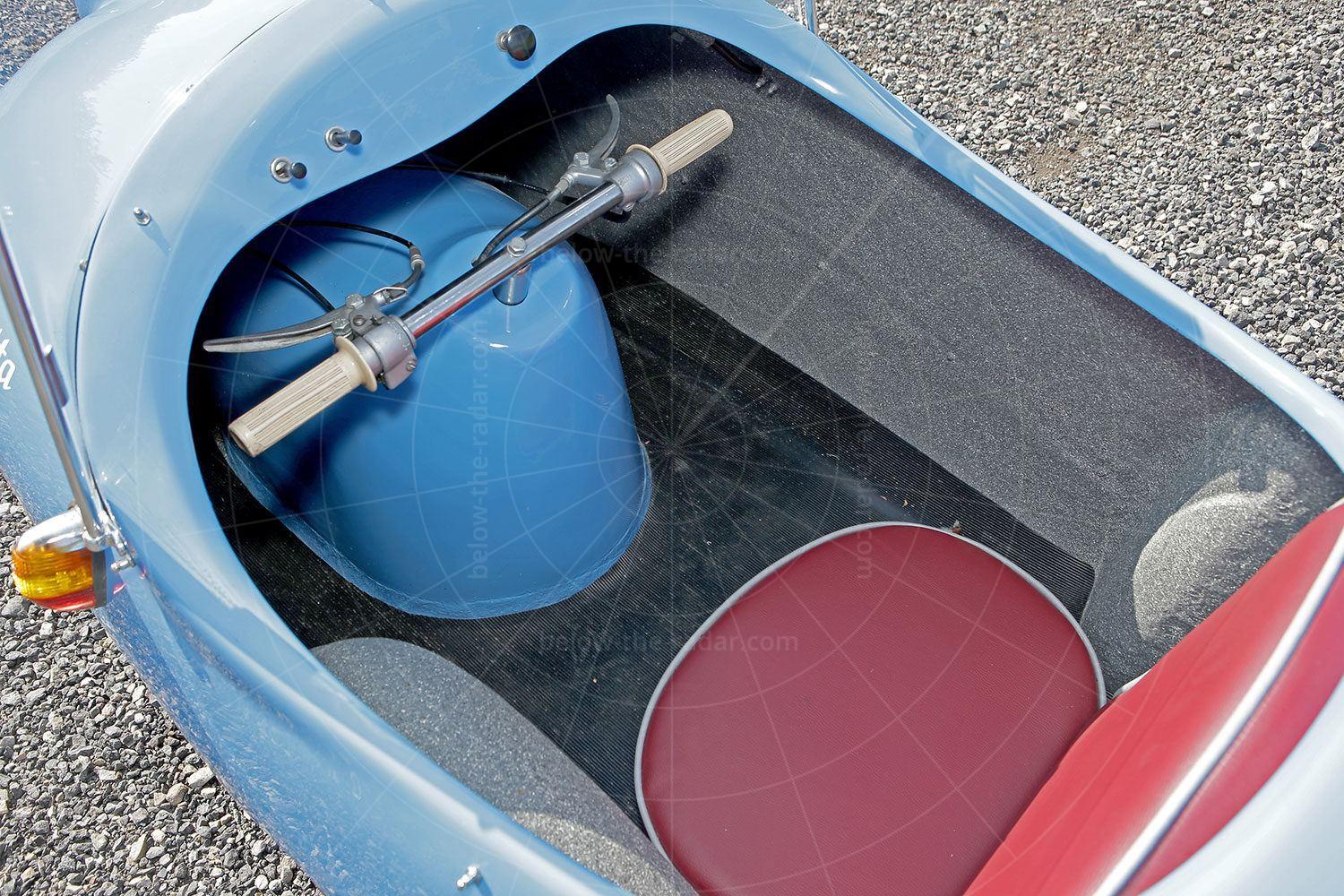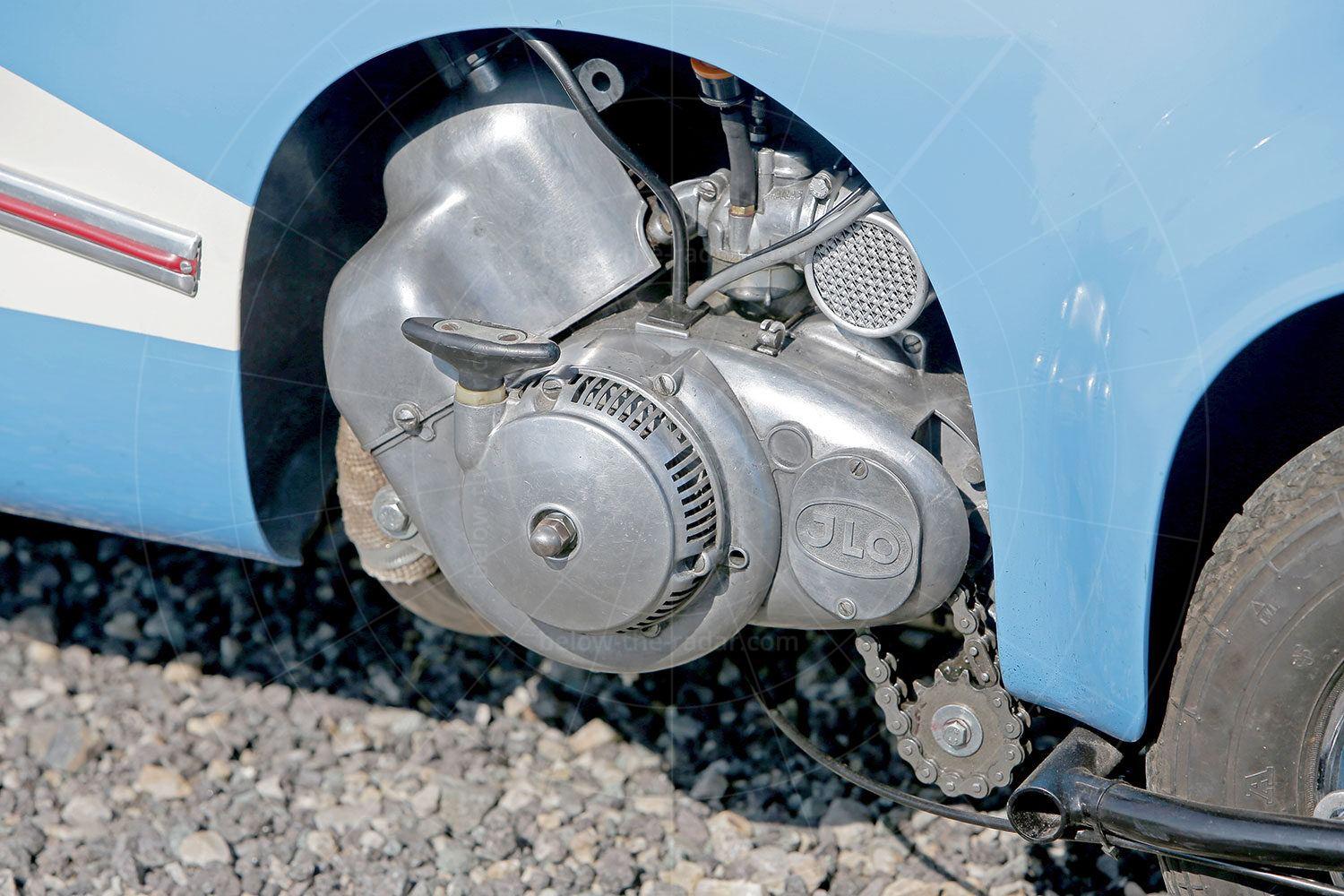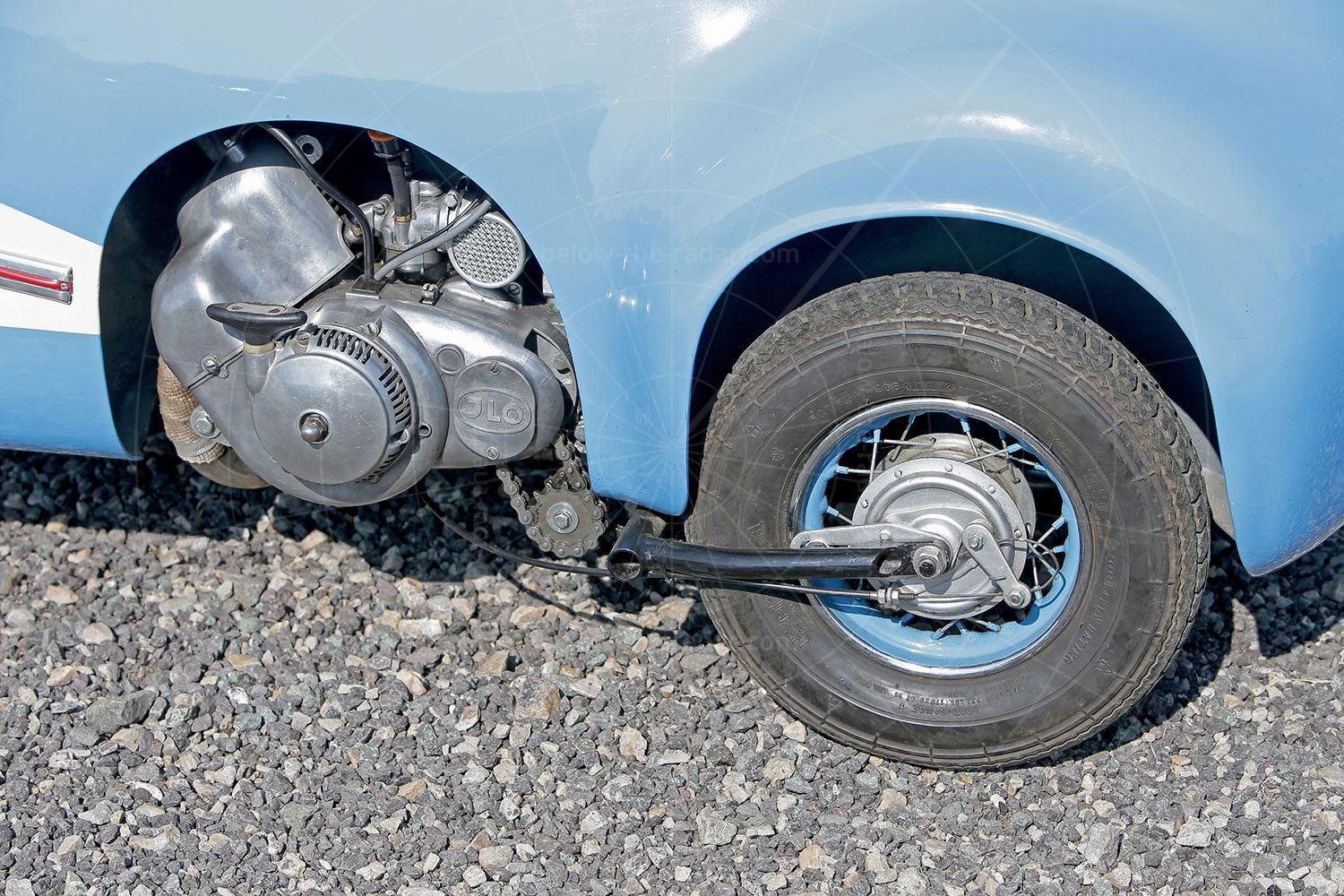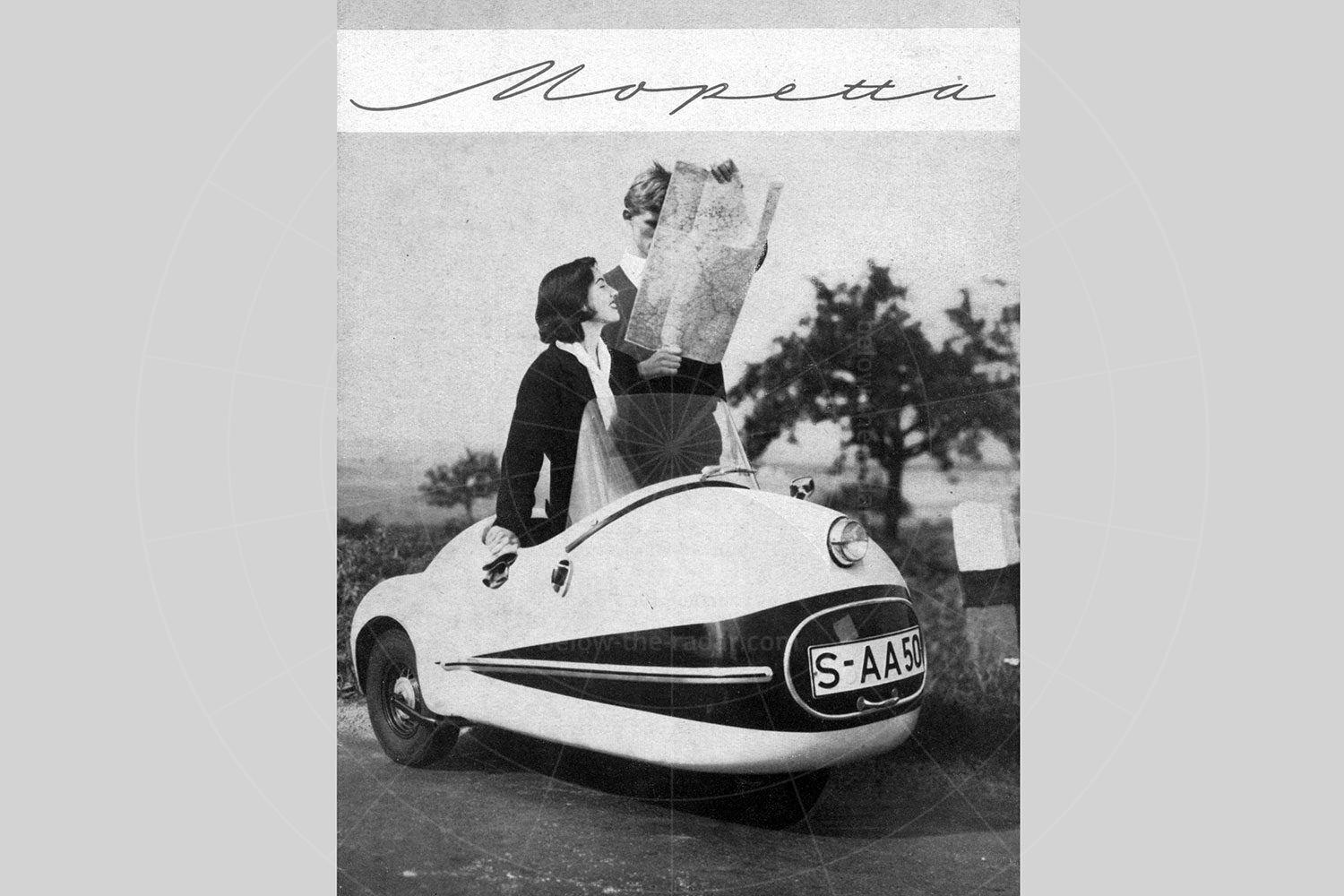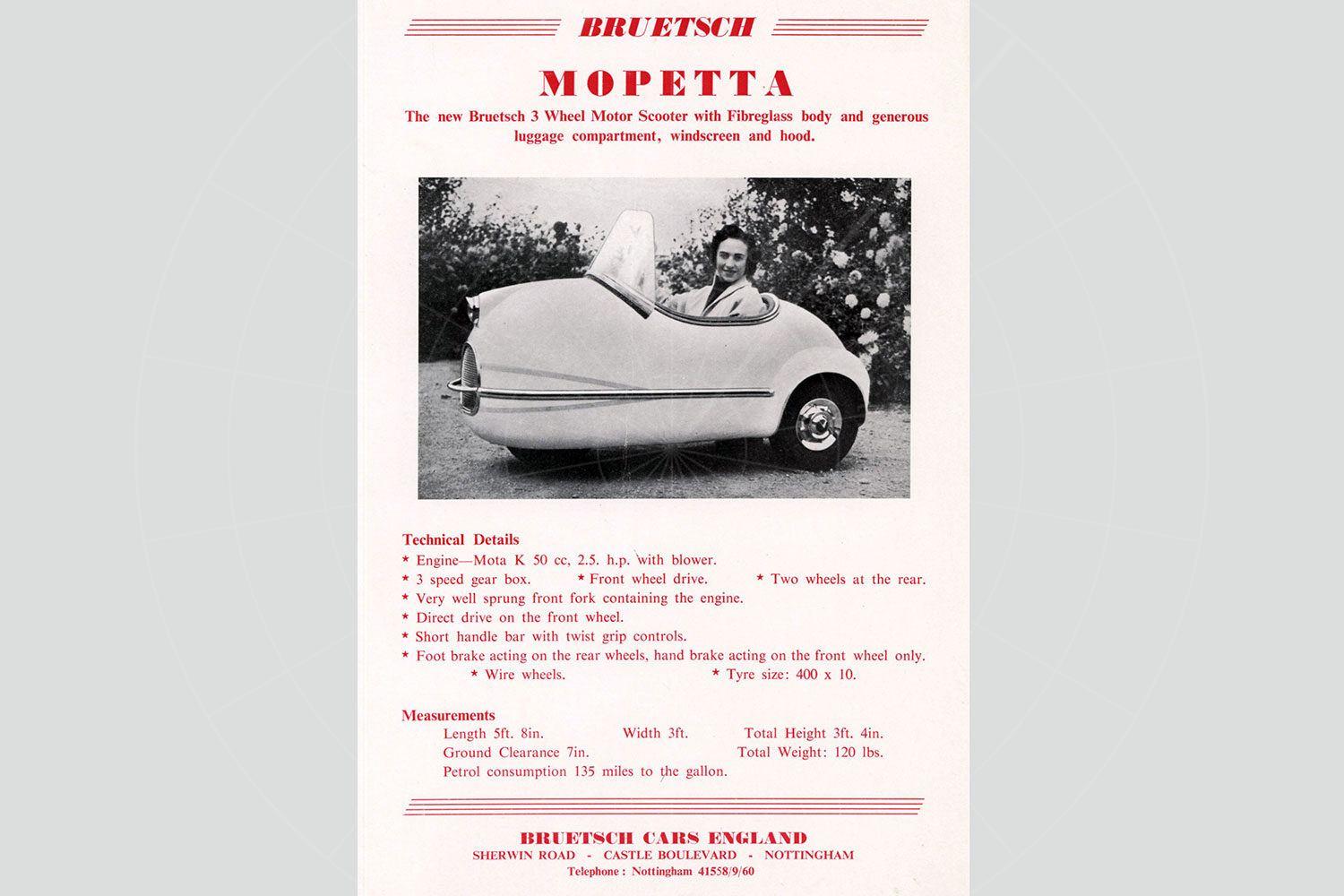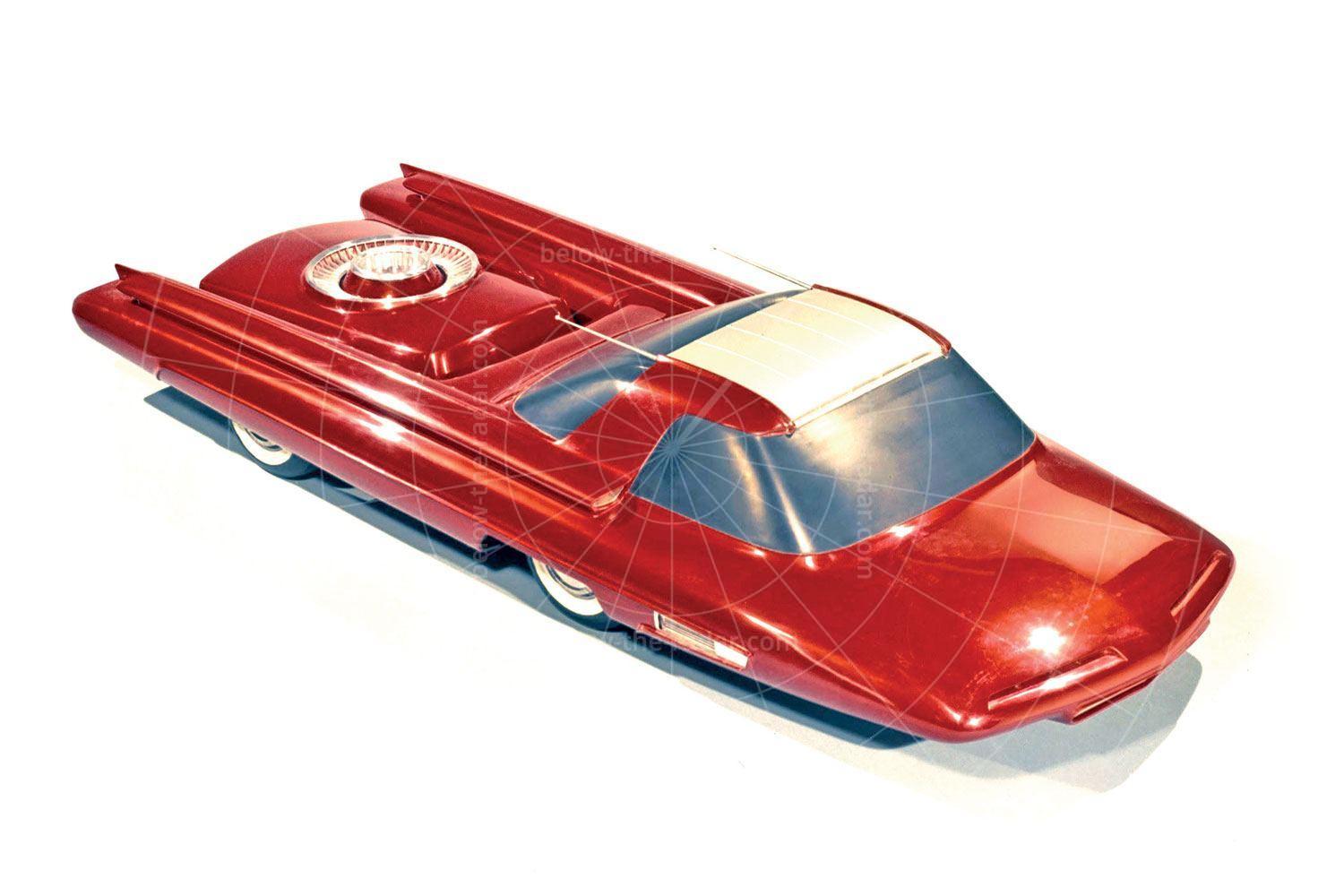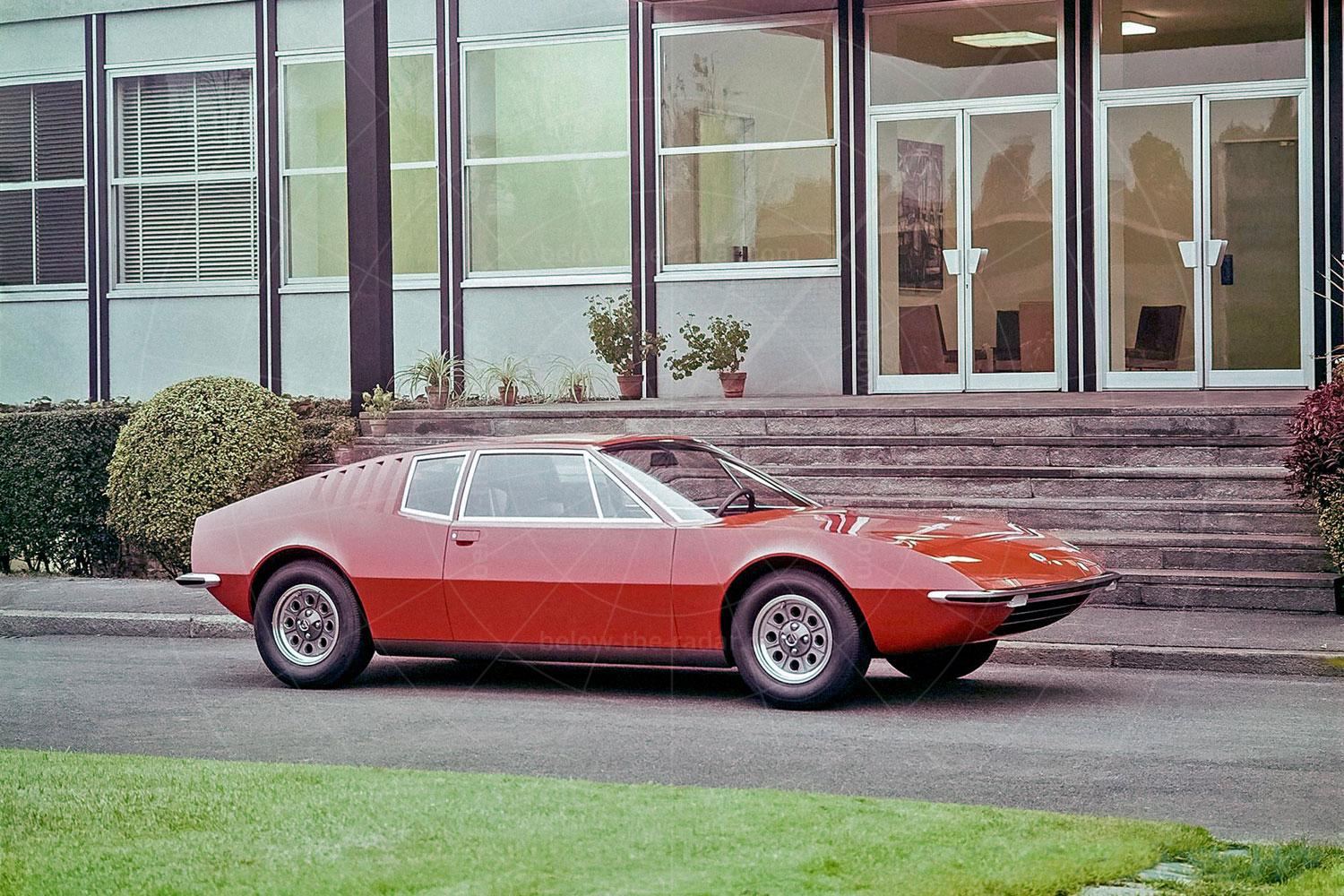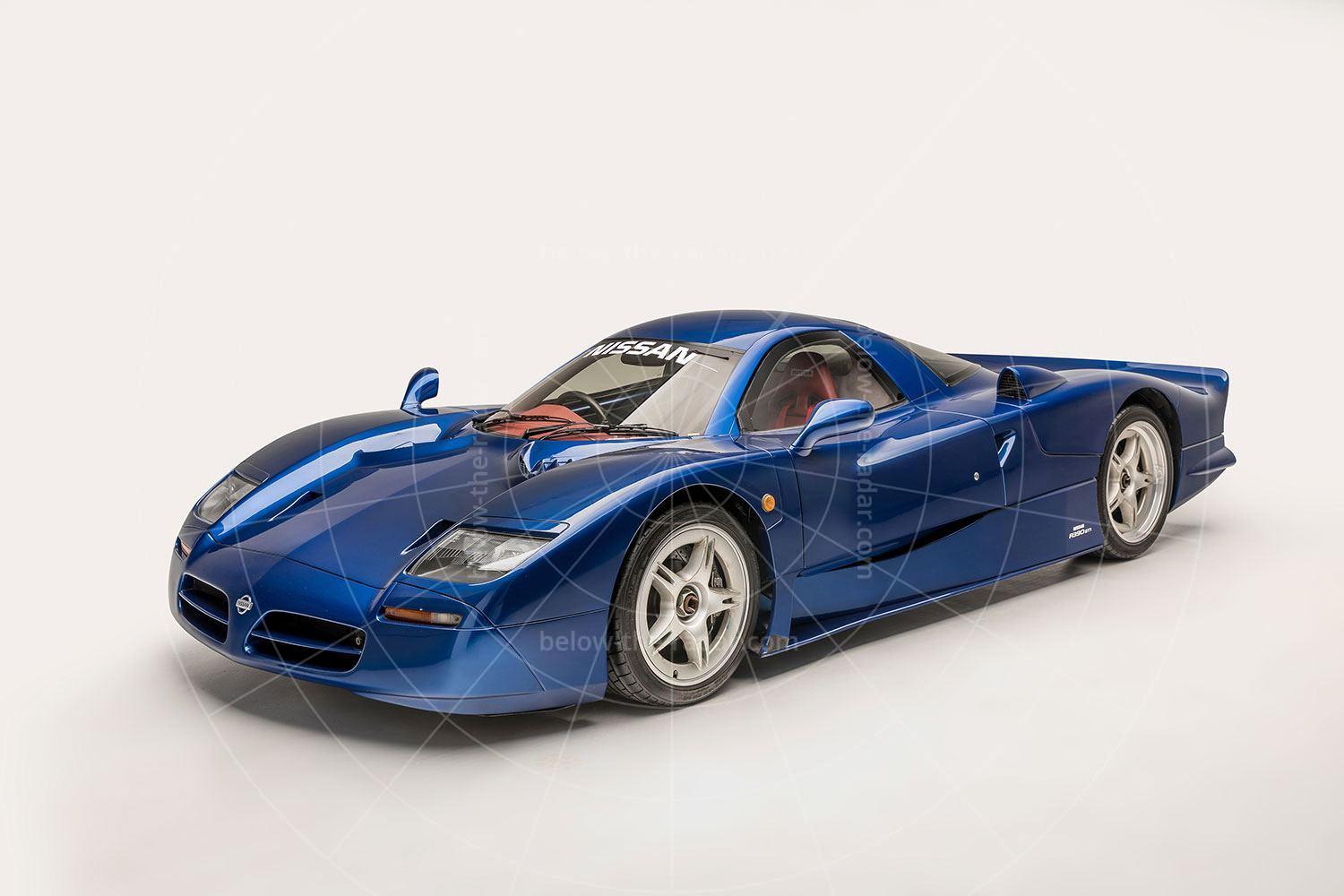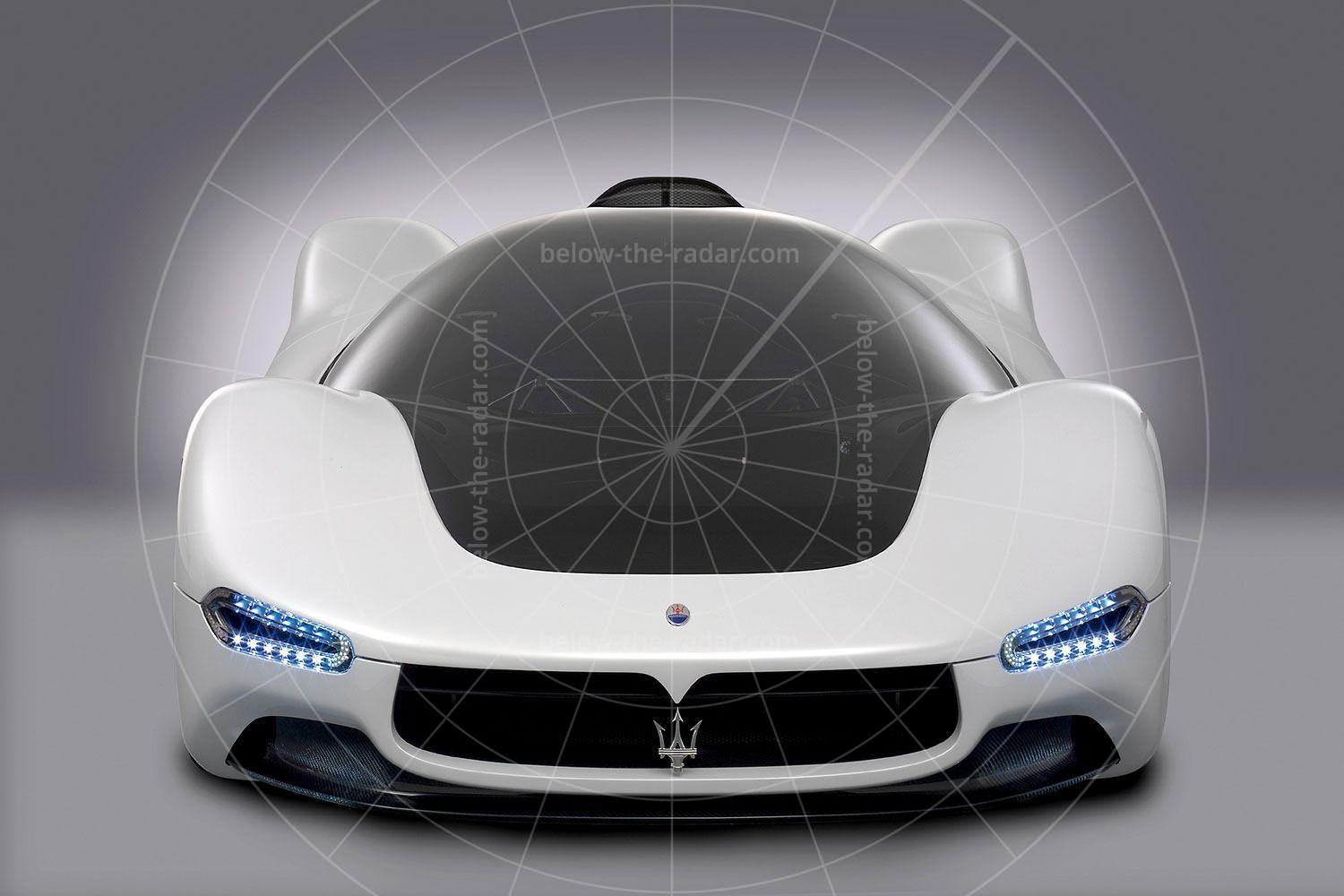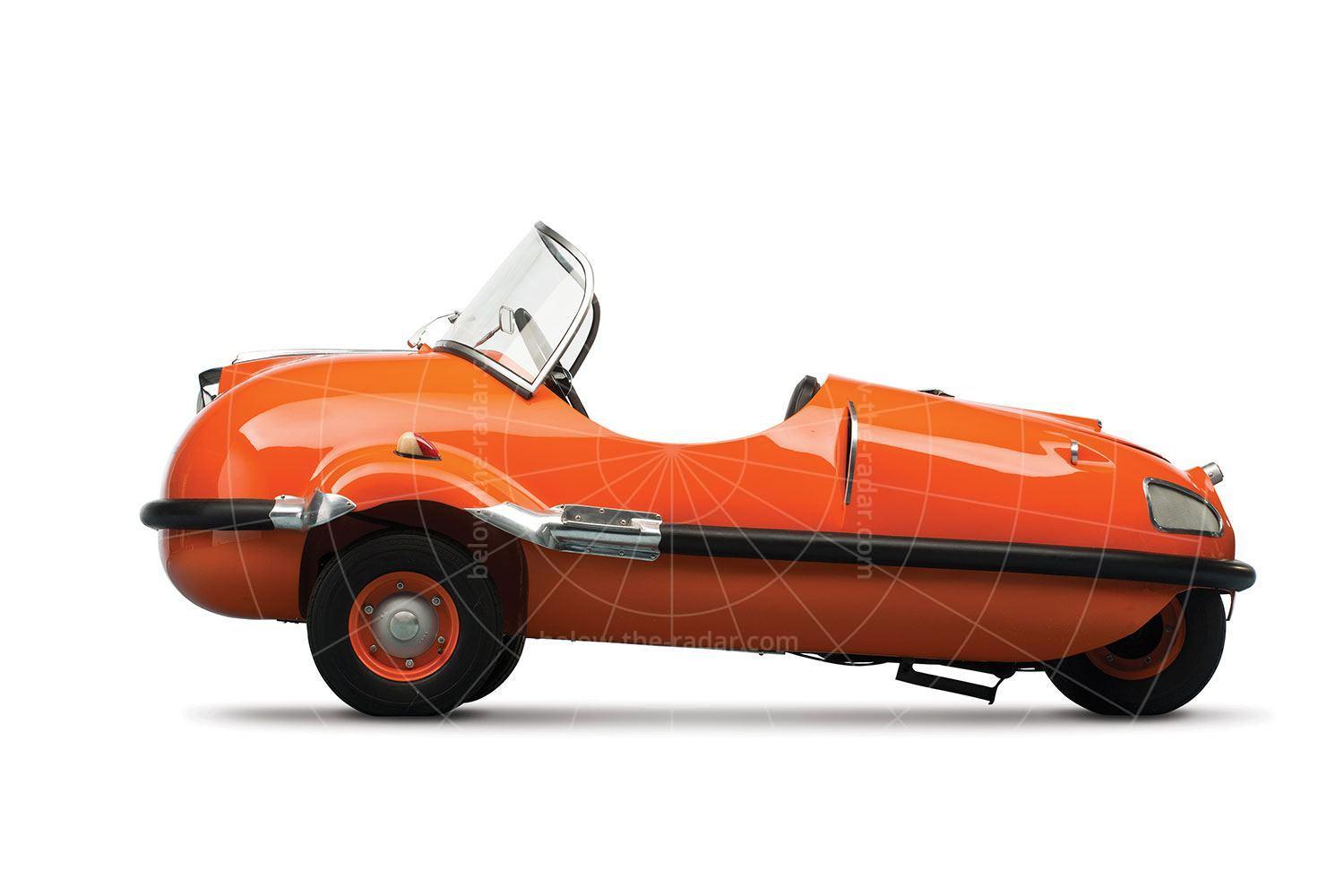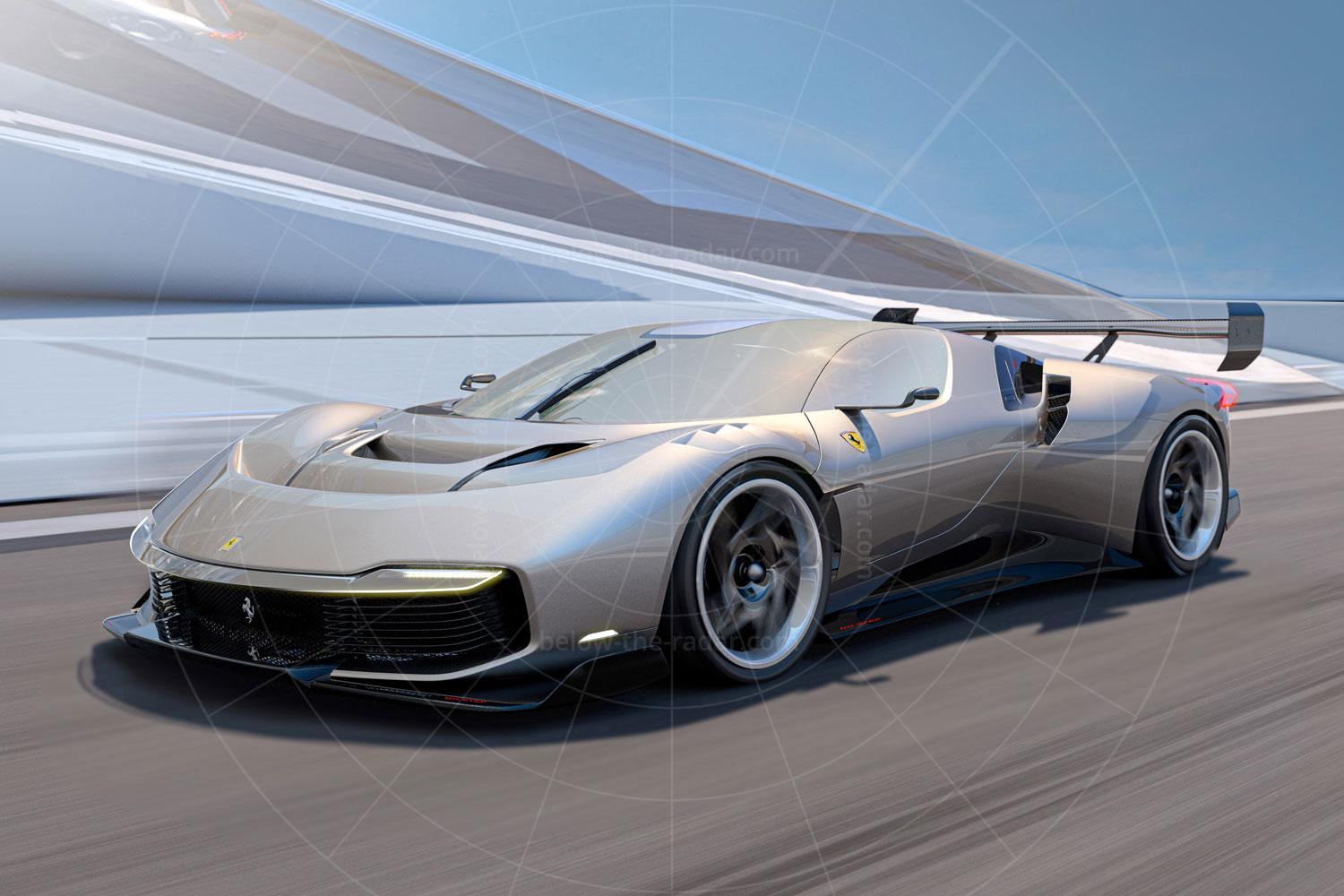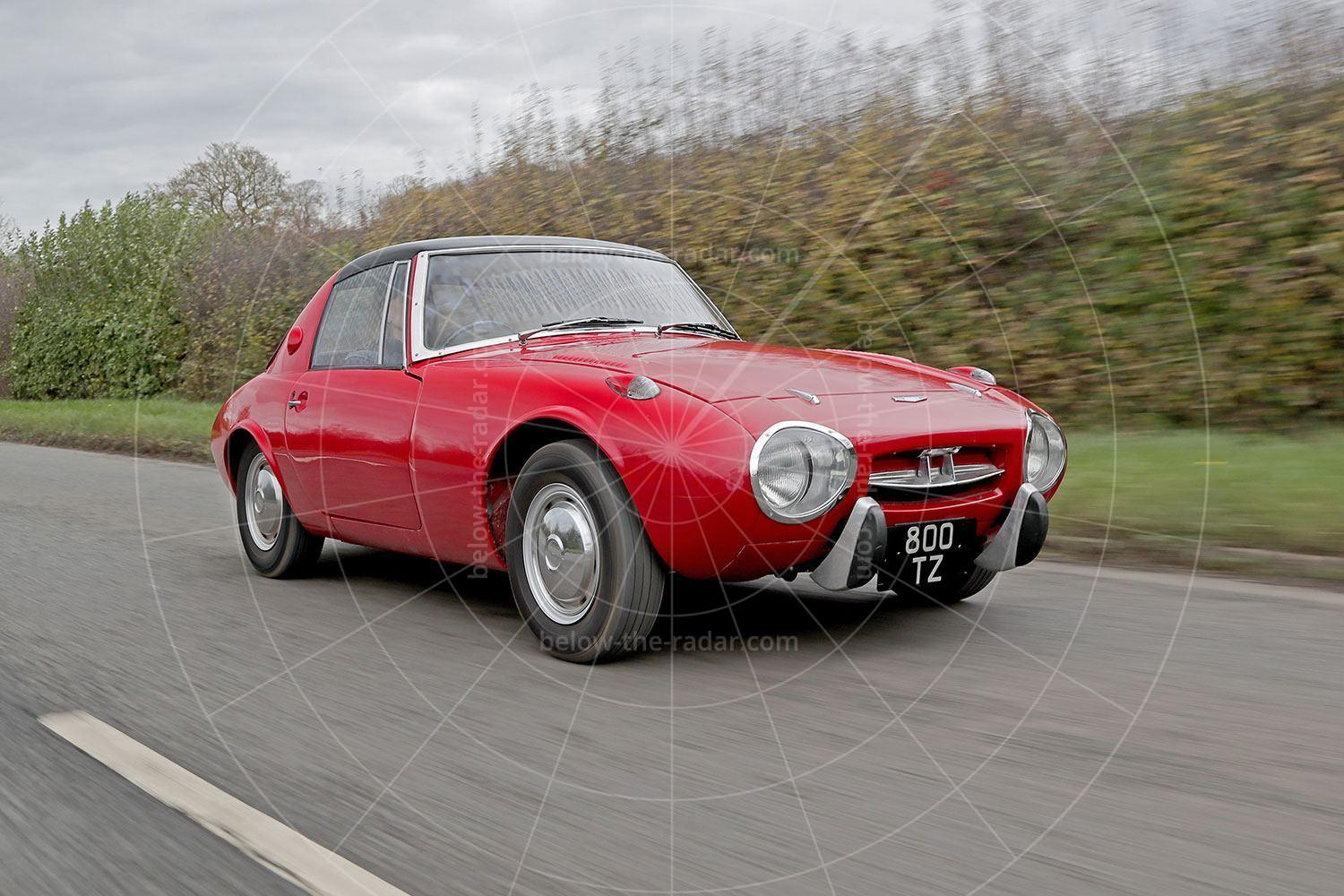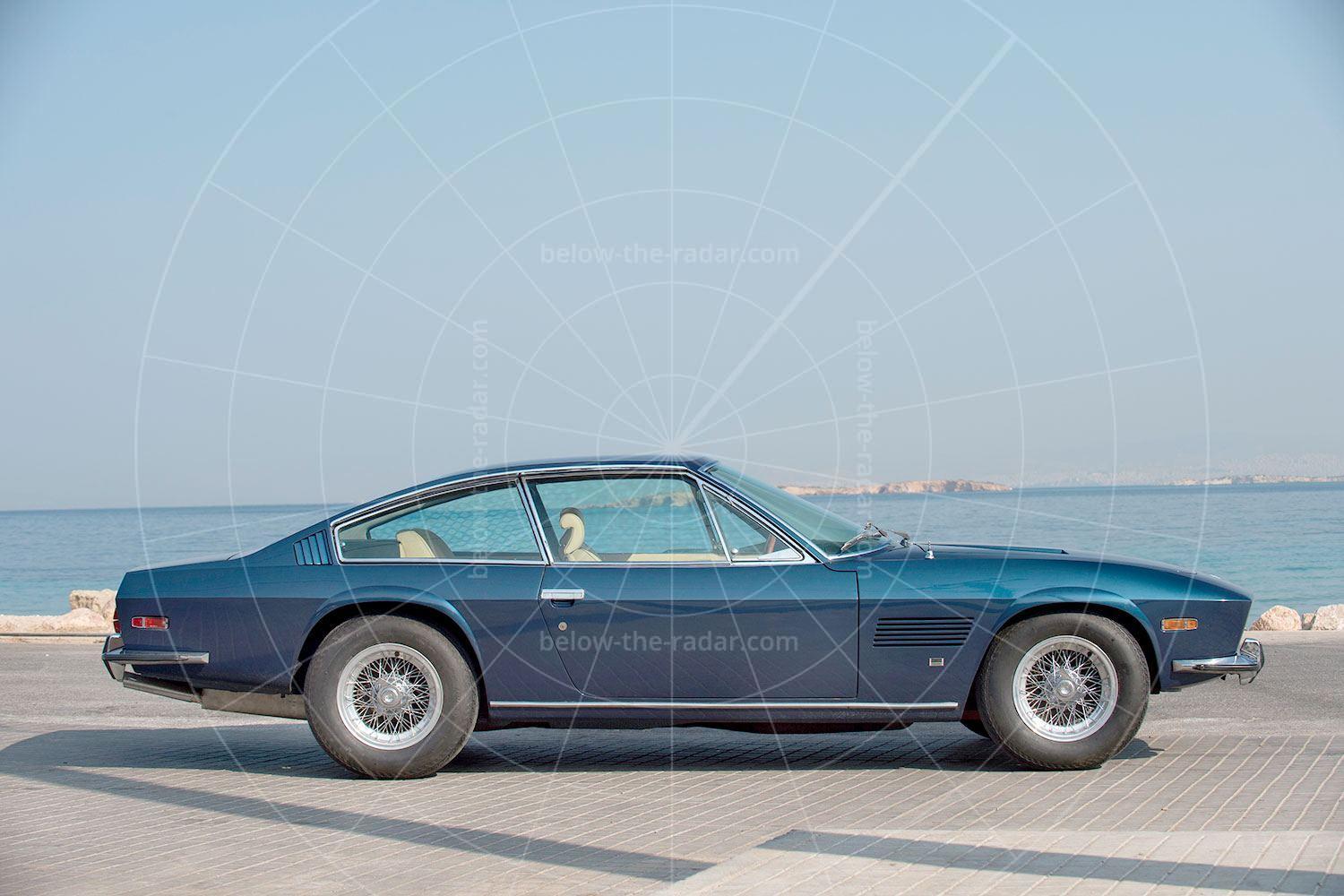It came with one seat, one headlight, a single-cylinder engine and just three wheels. Representing economy motoring at its most basic, the Brutsch Mopetta is one of the most bizarre and endearing cars ever made. Not that you can really call it a car, because the Mopetta is really a scooter with an identity crisis, with its tiny two-stroke engine and a three-speed gearbox that lacks a reverse gear; when you need to turn it around you just pick it up and move it by hand.
Perfect for the person with a death wish who was in no hurry, the Mopetta's top speed was just under 22mph, while it was just 1.7 metres long and all of 88cm wide. And unless you were a dwarf there was no hope of keeping much of your face behind the windscreen which was likely to protect nothing above your chin. Still, with the prospect of reaching speeds that left you vulnerable to having pedal cyclists up against your back bumper (well, if the car had one…), there was probably not that much damage that you could do to yourself…
The Brutsch Mopetta made its debut at the 1956 Frankfurt motor show and it was the brainchild of prolific microcar creator Egon Brutsch. The problem was that he had a habit of moving on to the next project before the last one was finished, so as a result, he's responsible for a raft of other tiny-selling vehicles, many of which have become every bit as collectable as the Mopetta.
If you're wondering just how collectable the Mopetta is, the most original survivor of the few cars left (registered 408 EPD) was sold at auction by Historics in 2017 for £46,000. That's a lot of money for a 'car' that's as unusable as they come. Even more bonkers is the fact that just two years later the same car was sold by RM Sotheby's, and this time it realised an even more eye-watering €69,000.
Brutsch allegedly designed and built the Mopetta in just one day, which makes you wonder how he filled the afternoon. Intended to be amphibious (yes, really!), the Mopetta was supposed to be propelled solely by its chain-driven left-hand rear wheel, although it failed on at least one count. Firstly, it couldn't float, which was quite a shortcoming, and secondly – presumably – the engine would flood as it would be below the water-line.
If the Mopetta lacked prowess on the water, it was little better on the road. Indeed, so poor was the tiny single-seater deemed to be, in every way, that the German authorities refused to allow Brutsch to sell the Mopetta in his home market. Undeterred, Brutsch tried to work with Opel to put the Mopetta into production but those talks came to nothing, so his next step was to ship the cars that he'd already built to the UK, to sell them there through Automotive & Marine Ltd of Albany Street in London. For some reason the Mopetta proved pretty much impossible to sell; who could have seen that coming?
After all, for your £200 you got a car that could accommodate a fully grown adult in reasonable comfort – until the car started moving under its own limited power that is. There was even a see-through poly-ethylene roof which could be raised once the sole occupant was sitting inside. Before they could get out again they'd have to fold the roof away however, as it enveloped the cabin. Once it was up the sealing was poor and headroom limited, so frankly you were better off just wearing a waterproof hat if you were going to drive in the rain – although a better idea was to leave the Mopetta at home and walk or catch the bus.
When The Motor magazine tested a Mopetta in 1957, the review was either positive or factual – there was no hint of criticism despite the Mopetta's almost complete lack of practicality. Perhaps the reader was supposed to read between the lines by taking on board the various stats tables that spelled out such details as the Mopetta's kerb weight (just 87.5kg), its overall width of just three feet and the fact that at a constant 10mph it was capable of 124mpg – or 138mpg at a steady 15mph.
The Mopetta came with no warning lights, instruments and not even a steering wheel – instead there were handlebars with just a quarter of a turn between locks for the single front 10-inch wheel. There was no heater either, although it was noted that the "engine gently warms the driver's left thigh; a hole provided for access to the sparking plug emits a stream of air which in winter can be used to warm up cold hands". So Mopetta drivers did get some luxury after all.
The Motor also noted that "In the tail of the body is room for quite enough luggage for any tour which a Mopetta driver is likely to undertake", which was presumably based on the assumption that no owner would go more than a few miles from home, with dirty weekends away being a complete non-starter as there was space inside only for one.
Another observation was that "Cold starts are best made standing alongside the Mopetta, but once warmed up an accidentally stalled engine can readily be restarted from the driving seat. Anyone who is allergic to string pulling or has over-choked the two-stroke engine will find that accessibility of the controls from alongside the vehicle makes a push start in second gear fairly easy, but the Mopetta's infallible magnetism for spectators in practice means that only in the most lonely of places need its owner ever actually push it himself".
The reviewers also noted that "the top speed on the level improved from barely 20mph to about 22mph during our test miles and would undoubtedly rise further towards the 27mph claimed by the German factory as the engine loosened up". Another observation was that "cornering is excellent, with the proviso that as the track is narrow and the engine's weight is on the left, an encounter with a projecting manhole cover when cornering very vigorously to the right can cause one rear wheel to lift and demand momentary but instant easing off of the steering until a three-point landing has been made".
Bearing in mind all of the above, The Motor didn't seem to have any hesitation in recommending the Mopetta to its readers. The conclusion came that: "it can provide plenty of amusement, both by what it can do and by the reactions it produces from an astonished and faintly incredulous populace, but it also has real utility for short-distance journeys. A Mopetta as we tested it has real usefulness, and we hope that later examples will be even better".
Even better eh? It's hard to see how such a winning formula could really be improved upon.
Vital statistics
| Produced | 1956-1958 |
| Number built | 14 |
| Engine | Rear-mounted, 49cc, 1-cylinder |
| Transmission | Three-speed manual |
| Power | 2.3bhp at 5250rpm |
| Top speed | 21.6mph |
| 0-20mph | 17.2 seconds |
| Launch price | £200 |

